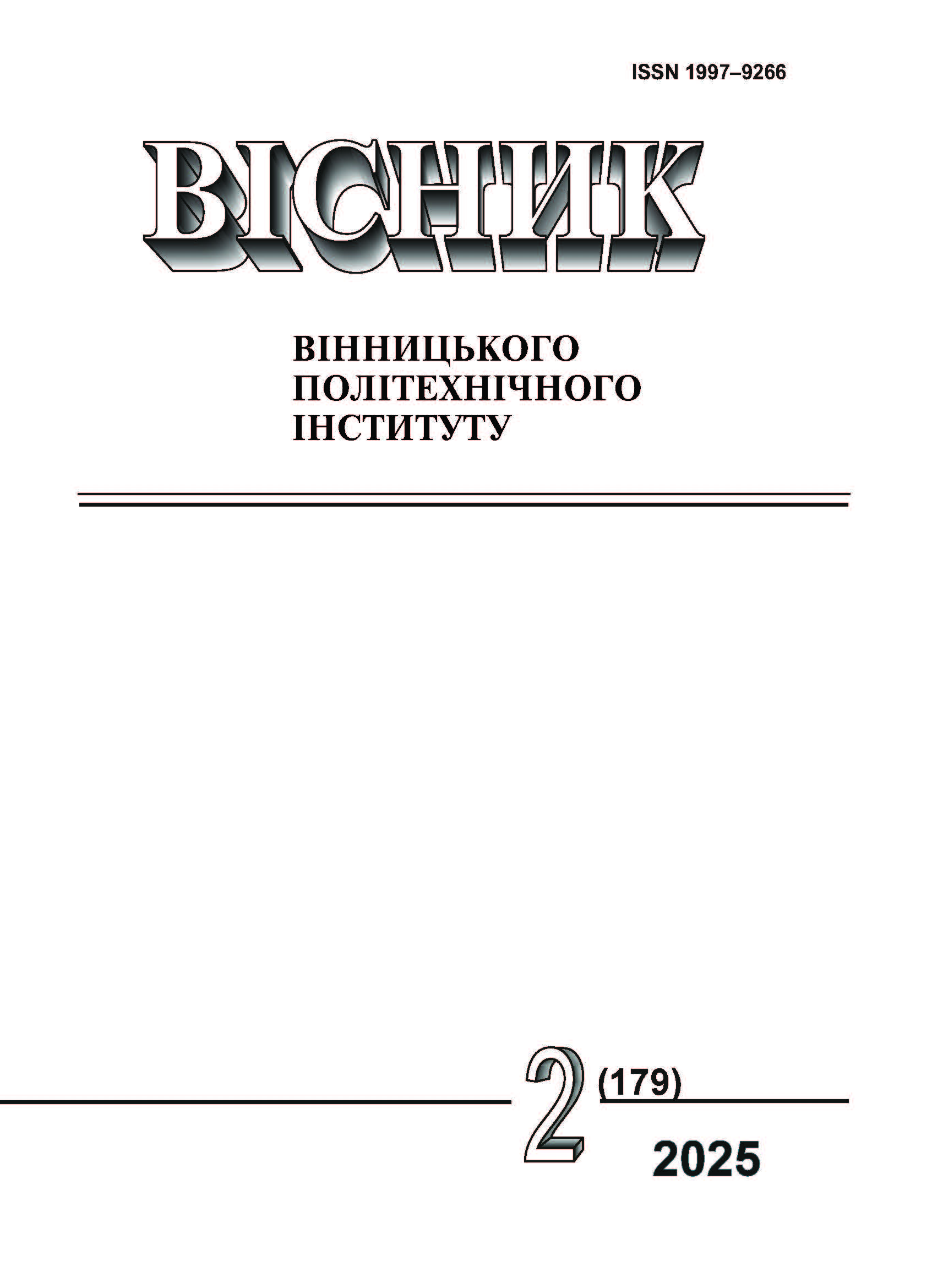The Problem of Scheduling the Maintenance of Power Grid Facilities
DOI:
https://doi.org/10.31649/1997-9266-2025-179-2-104-110Keywords:
multi-objective optimization, scheduling theory, parallel machines, sets, heuristic algorithm, local search, compromise solutionAbstract
This paper addresses a bi-criteria scheduling problem for restoring power supply after an emergency outage under limited resources — specifically, repair crews operating in parallel. Such situations are typical for urban infrastructure systems under critical conditions, where rapid decision-making is required while simultaneously considering multiple conflicting objectives. The mathematical formulation of the problem involves two objectives: minimizing the average weighted blackout time for citizens and minimizing the total working time of the repair crews (makespan). The proposed model belongs to the class of parallel machine scheduling problems with weighted jobs, where weights reflect the social importance of each task (district). To solve this problem, three algorithms have been developed: a heuristic algorithm, a local search algorithm with job relocation (LS1), and a local search algorithm with job exchange (LS2). The heuristic algorithm combines strategies for optimal single-machine scheduling (based on average weighted completion time) with load-balancing techniques for parallel machines (LPT algorithm). LS1 is based on the step-by-step improvement of the initial schedule by relocating jobs between crews while evaluating trade-offs between the two objectives. LS2 performs randomized exchanges of job pairs between machines and retains improvements based on the principle of fair compromise, which ensures lower computational complexity while maintaining high solution quality. Computational experiments confirm the effectiveness of the developed algorithms. It was found that LS1 and LS2 improve upon the heuristic solution by an average of 3.5…5 %. Experiments with different problem sizes showed consistent increases in execution time as task complexity grows, with LS2 outperforming LS1 in runtime due to its limited number of local modifications. The proposed approach enables efficient power restoration planning by integrating classical scheduling techniques with socially meaningful decision criteria.
References
Y. K. Lin, and T. Y. Yin, “Generating bicriteria schedules for correlated parallel machines involving tardy jobs and weighted completion time, ” Annals of Operations Research, vol. 319, pp. 1655-1688, 2022, https://doi.org/10.1007/s10479-021-04043-x.
X. Liu, Y. Feng, N. Ding, R. Li, and X. Chen, "Multi-criteria scheduling in parallel environment with learning effect," Foundations of Computing and Decision Sciences, vol. 49, no. 1, pp. 3-20, 2024, https://doi.org/10.2478/fcds-2024-0001 .
C. H. Liu, and W. N. Tsai, “Multi-objective parallel machine scheduling problems by considering controllable processing times,” Journal of the Operational Research Society, vol. 67, no. 4, pp. 654-663, 2016, https://doi.org/10.1057/jors.2015.82 .
J. Mar-Ortiz, A. J. Ruiz Torres, and B. Adenso-Díaz, “Scheduling in parallel machines with two objectives: Analysis of factors that influence the Pareto frontier,” Operational Research, vol. 22, pp. 4585-4605, 2022, https://doi.org/10.1007/s12351-021-00684-9 .
M. L. Pinedo, Scheduling: Theory, Algorithms, and Systems, 5th ed. New York, NY, USA: Springer, 2016, https://doi.org/10.1007/978-3-319-26580-3 .
J. Xu, and R. Nagi, “Identical parallel machine scheduling to minimise makespan and total weighted completion time: A column generation approach,” International Journal of Production Research, vol. 51, no. 23-24, pp. 7091-7104, 2013, https://doi.org/10.1080/00207543.2013.825379 .
P.-F. Dutot, L. Eyraud, G. Mounié, and D. Trystram, “Bi-criteria algorithm for scheduling jobs on cluster platforms,” arXiv:cs/0405006, 2004, https://doi.org/10.48550/arXiv.cs/0405006 .
X. Zhu, J. Xu, J. Ge, Y. Wang, and Z. Xie, “Multi-objective parallel machine scheduling with eligibility constraints for the kitting of metal structural parts,” Machines, vol. 10, no. 10, p. 836, 2022, https://doi.org/10.3390/machines10100836 .
W. Li, W. Zhai, and X. Chai, “Online bi-criteria scheduling on batch machines with machine costs,” Mathematics, vol. 7, no. 10, p. 960, 2019, https://doi.org/10.3390/math7100960 .
J. Rocholl, L. Mönch, and J. Fowler, “Bi-criteria parallel batch machine scheduling to minimize total weighted tardiness and electricity cost,” Journal of Business Economics, vol. 90, pp. 1345-1381, 2020, https://doi.org/10.1007/s11573-020-00970-6 .
A. Aalaei, V. Kayvanfar, and H. Davoudpour, “A multi-objective optimization for preemptive identical parallel machines scheduling problem,” Comput. and Applied Mathematics, vol. 36, pp. 1367-1387, 2017, https://doi.org/10.1007/s40314-015-0298-0 .
E.-G. Talbi, Metaheuristics: From Design to Implementation. Hoboken, NJ, USA: Wiley, 2009. https://doi.org/10.1002/9780470496916 .
Downloads
-
pdf (Українська)
Downloads: 40
Published
How to Cite
Issue
Section
License

This work is licensed under a Creative Commons Attribution 4.0 International License.
Authors who publish with this journal agree to the following terms:
- Authors retain copyright and grant the journal right of first publication.
- Authors are able to enter into separate, additional contractual arrangements for the non-exclusive distribution of the journal's published version of the work (e.g., post it to an institutional repository or publish it in a book), with an acknowledgment of its initial publication in this journal.
- Authors are permitted and encouraged to post their work online (e.g., in institutional repositories or on their website) prior to and during the submission process, as it can lead to productive exchanges, as well as earlier and greater citation of published work (See The Effect of Open Access).





